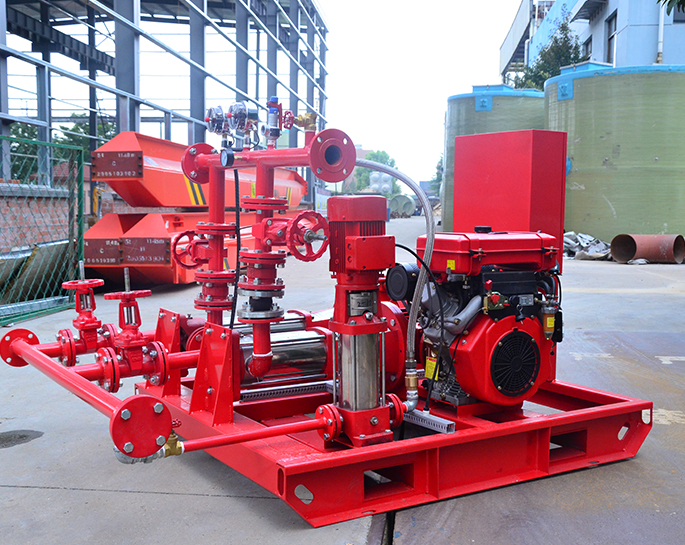How to prolong the service life of fire pump?
May 10, 2023
Share:
The fire pump is a crucial piece of equipment and is essential for proper fire protection systems. The fire pump is designed to deliver water to a fire sprinkler system or standpipe system, and it is important to maintain the pump to ensure that it is always in working order. Proper maintenance and care can extend the life of a fire pump significantly.
Regular inspection and testing of fire pumps is key to ensuring that they will continue to operate properly. This should include visual inspection of the unit for any signs of wear and tear, along with checking the oil levels, hoses, and seals for any signs of leakage. The pump should also be tested and inspected on a regular basis to ensure that it is working properly.
It is also important to ensure that the fire pump is regularly serviced and maintained. Regular servicing should include changing the oil and filters, checking the electrical connections, and checking the impeller and other components for any wear and tear. A professional service technician should be consulted to ensure that the fire pump is in good working order.
In addition to regular inspection and servicing, the fire pump should be operated correctly and safely. The pump should not be operated at a higher pressure or flow rate than what is recommended by the manufacturer, as this can cause excessive wear and tear on the pump. The pump should also be operated in a manner that does not exceed its maximum pressure and flow rate.
Finally, the fire pump should always be stored in a clean, dry, and well-ventilated area. This will help to ensure that the pump does not become contaminated with dust and debris and that it is not exposed to extreme temperatures. By following these tips, you can help to extend the service life of your fire pump and ensure that it is always in good working order.

Regular inspection and testing of fire pumps is key to ensuring that they will continue to operate properly. This should include visual inspection of the unit for any signs of wear and tear, along with checking the oil levels, hoses, and seals for any signs of leakage. The pump should also be tested and inspected on a regular basis to ensure that it is working properly.
It is also important to ensure that the fire pump is regularly serviced and maintained. Regular servicing should include changing the oil and filters, checking the electrical connections, and checking the impeller and other components for any wear and tear. A professional service technician should be consulted to ensure that the fire pump is in good working order.
In addition to regular inspection and servicing, the fire pump should be operated correctly and safely. The pump should not be operated at a higher pressure or flow rate than what is recommended by the manufacturer, as this can cause excessive wear and tear on the pump. The pump should also be operated in a manner that does not exceed its maximum pressure and flow rate.
Finally, the fire pump should always be stored in a clean, dry, and well-ventilated area. This will help to ensure that the pump does not become contaminated with dust and debris and that it is not exposed to extreme temperatures. By following these tips, you can help to extend the service life of your fire pump and ensure that it is always in good working order.


.png)
.png)

.png)


